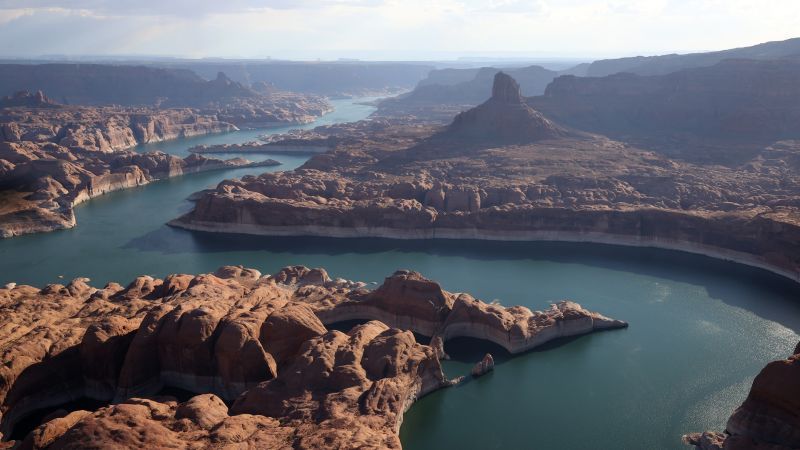cnn
—
Lake Powell, the second-largest man-made reservoir in the U.S., has lost nearly 7% of its potential storage capacity since 1963, when the Glen Canyon Dam was built, a new report shows.
In addition to water loss due to an intense multi-year drought, according to the U.S. Geological Survey and Bureau of Reclamation report, Lake Powell faced an average annual loss in its storage capacity of about 33,270 acres. -foot, or 11 billion gallons, per year between 1963 and 2018.
That's enough water to fill the National Mall's reflecting pool about 1,600 times.
The reservoir's capacity is being reduced due to sediment flowing from the Colorado and San Juan rivers, according to the report. These sediments settle at the bottom of the reservoir and decrease the total amount of water that the reservoir can hold.
As of Monday, Lake Powell was about 25% full, according to Bureau of Reclamation data.
It's bad news for a region already facing water shortages and extreme wildfires due to drought. Drought experts at the National Oceanic and Atmospheric Administration said last week that these conditions are expected to at least continue – if not worsen – in the coming months.
Lake Powell is a major reservoir in the Colorado River Basin. Both Lake Powell and nearby Lake Mead, the country's largest reservoir, have been draining at an alarming rate. In August, the federal government declared water shortages on the Colorado River for the first time after Lake Mead's water level fell to record lows, prompting mandatory water consumption cuts for southwestern states that began in January.
And last week, Lake Powell fell below the critical threshold of 3,525 feet above sea level, raising additional concerns about the water supply and hydroelectric power generation that millions of people in the West depend on for energy. electricity.
The importance of the dwindling water supply along the Colorado cannot be overstated.
The system supplies water to more than 40 million people living in seven western states and Mexico. Lakes Powell and Mead provide a critical supply of drinking water and irrigation for many people throughout the region, including rural farms, ranches and Native communities.
“It is vitally important that we have the best scientific information available, like this report, to provide a clear understanding of water availability in Lake Powell as we plan for the future,” Tanya Trujillo, Department of the Interior Undersecretary for Water and Science of the US, said in a statement. “The Colorado River system faces multiple challenges, including the effects of a 22-year drought and the increased impacts of climate change.”












